At Midwest LSA Expo on Day Two, I gave my first Mosaic talk to a SRO room. The video turned out well so following some editing on the Q&A session that followed, I pledge to get this up next week.
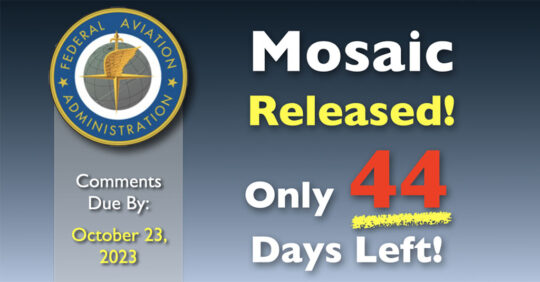 My presentation was a distillation of 318 original pages into a 45-minute presentation. Some described it as “drinking out of a fire hose.”
My presentation was a distillation of 318 original pages into a 45-minute presentation. Some described it as “drinking out of a fire hose.”
The Q&A added another 30 minutes. Pilots in the audience helped me better understand this Mosaic monster. I hoped that would happen and I’m pleased it did.
 After going through the entire document twice and multiple times for some portions, more is yet to be discovered (though I’m getting weary of studying it.)
After going through the entire document twice and multiple times for some portions, more is yet to be discovered (though I’m getting weary of studying it.)
Beyond Mosaic
After a vigorous discussion about FAA’s new rule, I was keen to get outside among the airplanes that I enjoy. In particular, I wanted to have a closer look at Direct Fly’s Alto NG. This is not an entirely new airplane to Americans — we’ve seen Alto 100 — but the brand suffered from ineffective representation and was in danger of fading from the scene in the USA.
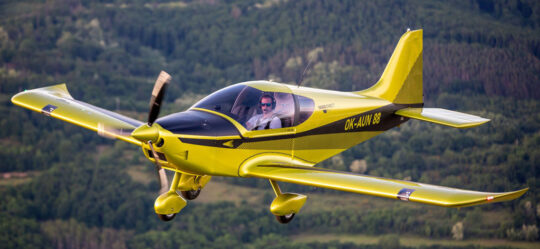
Ken is a multi-talented pilot who has done crop dusting for many years and flies a King Air 350 as a corporate pilot. He admits that the light weight of Alto NG was a learning experience but he is very impressed with the machine.
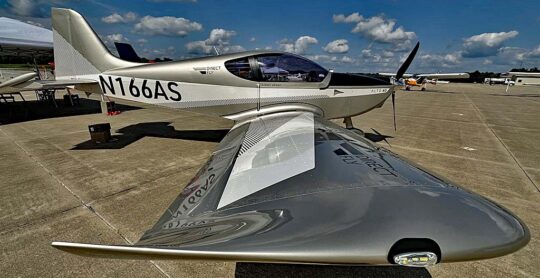
Finding that price “affordable” is a subjective evaluation. You buy what you can afford, of course. Yet an aircraft that looks this way and costs $147,500 in 2023 could be compared to perhaps $120,000 only a few years ago. You know everything cost you more today than it did say in 2018. Airplanes are no different. Producers have been tossed around by inflation, supply chain challenges, shortages of materials and labor, war, increasing regulation, along with many other expenses that are troubling all kinds of businesses.
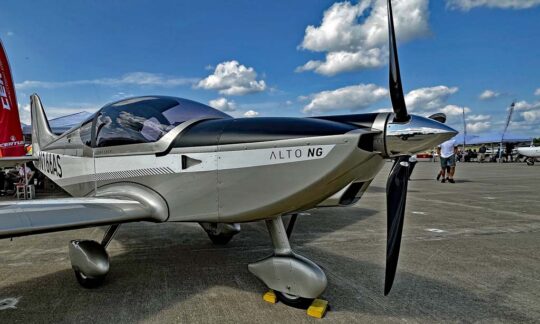
The interior was color matched by Direct Fly to coordinate with the beautiful exterior paint scheme. Clearly, Direct Fly is accomplished at painting and other finish work. The closer you look at this airplane the more you notice the details.
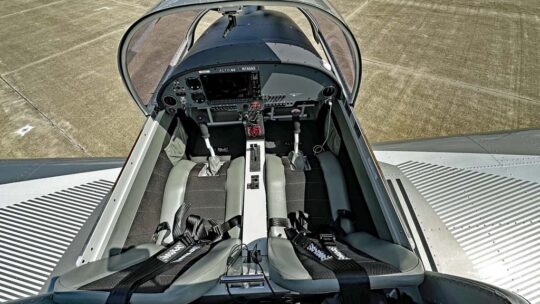
“The advantages of Alto lie in its simple and comfortable piloting, which is guaranteed by the design of the wing” Direct Fly said. “The rectangular wing plan and the profile with a blunt leading edge provide predictable stall characteristics and behavior.”
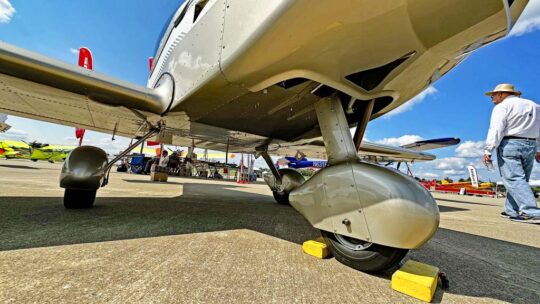
With good looks and a beautiful finish, benign and satisfying flight characteristics, and what must be described as a fair price tag in 2023, I suspect we will see more Direct Fly Alto NGs in the future.
Why wait two years for a Mosaic aircraft of your dreams (which will probably come at a significantly higher price), when you can have this beauty today? If you’d been at Midwest LSA Expo, you could’ve bought this handsome airplane and flown it home.
TECHNICAL SPECIFICATIONS:
Direct Fly Alto NG
all information supplied by the manufacturer
- Length — 21 feet
- Height — 7.4 feet
- Wingspan — 26.9 feet
- Wing area — 114 square feet
- Cockpit width — 43.3 inches
- Fuel tank capacity — 24.3 gallons
- Powerplant — Rotax 912ULS
- Take-off distance over a 50 foot obstacle — 1,345 feet
- Landing distance over a 50 foot obstacle — 968 feet
- Empty weight — 705 pounds
- Maximum takeoff weight — 1,320 pounds
- Never Exceed Speed — 140 knots
- Cruising speed— 97 knots (Ken commonly achieves 108 knots at 5000 RPM)
- Stalling speed, landing configuration — 41 knots
- Stalling speed, clean configuration — 47 knots
- Load factor — +4 / -2
- Maximum Climb Speed — 1,000 feet per minute
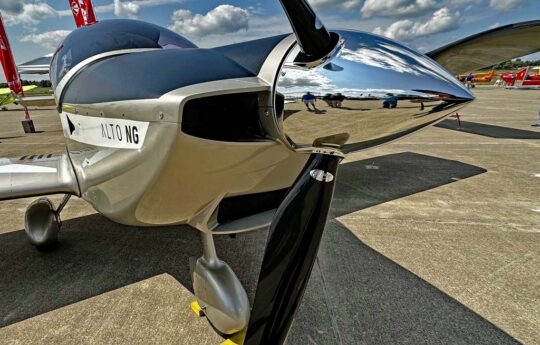
- US AeroSports, American importer for Direct Fly
- Direct Fly, factory website
- Alto 100 (predecessor model), articles and video on this website


How were total sales at this year’s event?
Thanks for the great coverage Dan
I did not do a survey, but anecdotally I heard of several sales. Chris Collins and the group at Midwest always puts out some stats, and they may include such information. I will, of course, pass it along.
The Alto was a definite standout at the expo. My daughter can’t stop talking about how good it flew.
Direct Fly currently only produces the ALTO NG version, production of previous ALTO 912 TG model was terminated in 2022.
That’s a high price for the average person. You would sell more if you can lower the profits side of the price. You can get a Skyranger for less than 60,000 and I know that’s a lot more plane but if it was around 99,000 and still make money you would profit more in a long run.
ThankYou, Chuck Mowery
Nice plane. Gonna be a hard sell though. Mosaic has dangled a golden carrot in our faces and two years sound like a long time, but the newer planes coming in Mosaic will be expensive, but they will be unencumbered by the limitations of pre LSA rules. Faster and more capable. I am wondering how Mosaic will affect manufacturers of aircraft like these. The 912 will look like a dinosaur when compared to the newer engines used in Mosaic aircraft.
Hi Dan, is there some way that we can access your PowerPoint distillation of Mosaic?
Also, the pilot community in the USA would really appreciate your distilling the FAA’s Mosaic topic of variable pitch props while in flight. These are engineered well enough now (Air Master) to make it undistractingly simple to operate with the huge safety benefit of increasing rate of climb during takeoff but also switching to economical cruise conditions.
Both LSA and Ultralight Part 103 vehicles need adjustable props during flight. Just think how the performance during climb and during cruise could make the Dracula, the Corsair, the Swan, the AIR-ATOS, and other electric powered vehicles so much safer and more fun to fly!
Thanks for continuing your valuable contributions to our flying communities, Dan. I look forward to each of your publications.
Cheers, Alan Cate. alan.cate@gmail.com
9Sep2023
===================
My presentation was created in Apple Keynote and is a huge file so, no, I cannot provide the entire thing. However, you can see it all in this current post on the website. Sharing a YouTube video or incorporating it on your own website is simple.
Adjustable props are coming in Mosaic.
Adjustable props on Part 103 vehicles makes little sense since those aircraft cannot exceed 55 knots.
Thanks for your kind words.
Hi Dan, the main reason for adjustable in-flight props for part 103 vehicles is to improve rate of climb and to reduce take-off distance. They are not for increasing cruise speed since a fixed pitch prop can accomplish the optimum cruise speed.
Please report on the in-flight adjustable props from the Ukraine, Germany, Slovakia.
Alan Cate 15Sept2023.
6 gph at 8,000 feet in a 912 is terrible! It should be slightly under 5 gph, even at 95% throttle. Even better if it was an iS (which.. for that price point..)
It is less than 6 gph. Yes, it would be nice for a 912iS but it takes a long time to just break even at difference in cost of engines. Don’t forget that you now have computers that control the engine that can malfunction and leave you stranded. All that said, if one becomes available in factory-built plane I will order one.